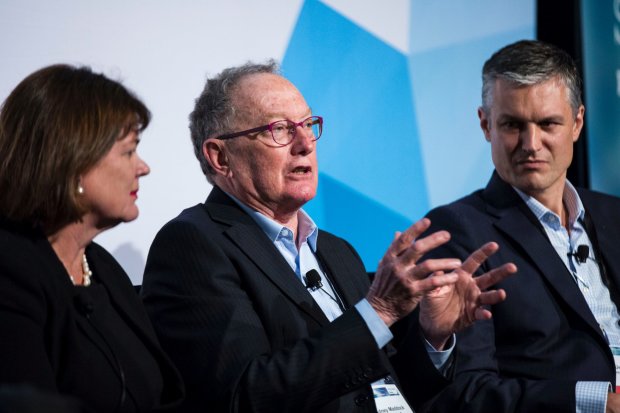Why Australia Must Withdraw from the Paris Climate Agreement
EXECUTIVE SUMMARY
- The Paris Agreement (the Agreement) is an international climate agreement which 195 nations have signed up to.
- The aim of the Agreement is to keep the increase in global temperature this century to well below 2 degrees Celsius above pre-industrial levels.
- To achieve this, the Agreement requires nations to reduce their greenhouse gas emissions.
- Under the Agreement, Australia is required to reduce its greenhouse gas emissions by 26-28 per cent of 2005 levels by 2030.
- There are three key reasons why Australia should exit the Agreement.
- Firstly, the economic cost of Australia meeting its emissions reduction requirement under the agreement is estimated to be $52 billion in net present value terms, over the period 2018-2030. This equates to $8,566 per family in Australia.
- This cost reflects the additional cost of generating electricity in Australia as a result of the Agreement emissions reduction requirements.
- There will also be a series of flow-on consequences which are not empirically estimated in this paper, but include: lower business investment; lower employment and lower wages growth; and a reduction to real incomes due to increased cost of consumption.
For the nation as a whole, $52 billion could have provided funding for 22 new hospitals, two decades' worth of the Gonski 2.0 education funding, or over four years' worth of funding for the National Disability Insurance Scheme (NDIS).For families, $8,566 would provide funding for five years' worth of schooling at a local government school, paying down entire credit card debt, or four years' worth of electricity bills.The cost of the Agreement more than twice eliminates the income tax relief provided in the 2018-19 Budget to individual middle income earners.Secondly, the Agreement is not operating as intended.- US President Donald Trump has provided formal notice that the world's second largest emitter, the United States, will withdraw from the Agreement. And the world's largest emitter, China, is unconstrained by the Agreement.
The Climate Action Tracker, a consortium of three research organisations, tracks national progress of 32 nations, which account 80 per cent of global emissions, in meeting their Paris emissions reduction targets.- The tracker finds that just seven nations out of the sampled 32 are on track to meet their national emissions reductions contributions to keep warming below 2°C above pre-industrial levels.
- Those nations — Morocco, the Gambia, Bhutan, Ethiopia, Costa Rica, the Philippines, and India — collectively account for just 6.6 per cent of global greenhouse gas emissions.
Thirdly, the Agreement will make no noticeable difference to the global temperature, even if all nations meet their national emissions reduction requirements.- Dr Bjorn Lomborg, President of the Copenhagen Consensus Centre and visiting professor at Copenhagen Business School, estimates that adopting all promises under the Agreement from 2016-2030 will reduce the temperature increase in 2100 by just 0.05°C.
- Australia accounts for just 1.5 per cent of global emissions from human activity. And human activity accounts for just three per cent of total emissions. Even the complete de-industrialisation of the Australian economy would make no noticeable difference to the global climate.
The government should withdraw from the Paris Climate Agreement and end all subsidies to weather-dependant energy generation such as wind and solar.
INTRODUCTION
 The Paris Agreement under the United Nations Framework Convention on Climate Change (the Agreement) is an international climate agreement involving 195 nations. The central goal of the Agreement is for signatory nations to hold average global temperature increase to below 2°C and pursue efforts to keep warming below 1.5°C above pre-industrial levels. (1) The reduction in the growth in temperature is to be achieved through reducing, or limiting the growth to, greenhouse gas emissions. Under the Agreement, each nation sets its own greenhouse gas emissions targets and policies to meet those targets. Australia's target is to reduce greenhouse gas emissions by 26-28 per cent of 2005 levels by 2030. (2)
The Paris Agreement under the United Nations Framework Convention on Climate Change (the Agreement) is an international climate agreement involving 195 nations. The central goal of the Agreement is for signatory nations to hold average global temperature increase to below 2°C and pursue efforts to keep warming below 1.5°C above pre-industrial levels. (1) The reduction in the growth in temperature is to be achieved through reducing, or limiting the growth to, greenhouse gas emissions. Under the Agreement, each nation sets its own greenhouse gas emissions targets and policies to meet those targets. Australia's target is to reduce greenhouse gas emissions by 26-28 per cent of 2005 levels by 2030. (2)
The National Energy Guarantee (NEG) is the Commonwealth government's proposed policy for achieving the emissions reductions required under the Agreement. To do this, the NEG would place obligations on energy retailers to reduce the emissions intensity of their energy acquisition portfolio. (3) This will result in a higher penetration of wind and solar energy generation, and a lower penetration of coal-fired energy generation than what would prevail under the status quo.
There are three central reasons why Australia should withdraw from the Agreement. Firstly, implementing policies to meet the emissions reduction requirements will impose significant and irreparable damage to the Australian economy. Drawing on data and analysis undertaken by the consulting firm Jacobs Group, this paper estimates that the cost to Australia of meeting the Paris Agreement emissions reduction requirements to be $52 billion from 2018-2030, in net present value terms, which equates to $8,566 per family in Australia. This cost reflects the additional cost of generating electricity in Australia compared with the counter-factual of exiting the Agreement and removing emissions reduction policies (proxied by the prices which prevailed under pre-2007 energy and climate policies).
For the nation as a whole, $52 billion could provide funding for 22 new hospitals, (4) two decades' worth of the Gonski 2.0 education funding, (5) or over four years' worth of funding for the National Disability Insurance Scheme (NDIS). (6) For families, $8,566 would provide funding for five years' worth of schooling at a local government school, (7) paying down entire credit card debt, (8) or four years' worth of electricity bills. (9)
The cost of Paris more than twice eliminates the income tax relief provided in the 2018-19 Budget to an individual middle income earner. An income earners of $80,000 is expected to receive cumulative tax relief of $3,740 over the period 2018-19 to 2024-25, under the government's Income Tax Plan. (10)
Secondly, the Paris Agreement is not functioning as intended. Under the Agreement, all signatory nations are to implement policies to meet national targets. However, the United States, which is the world's second largest emitter of greenhouse gases, has provided formal notice that it will be withdrawing from the Agreement. None of the European Union (EU) nations are on track to meet their obligations. And China, the world's largest emitter, is unconstrained by the Paris Agreement. China can continue to increase its emission, unabated, to 2030.
Thirdly, the best available evidence suggests that the Agreement will deliver little environmental benefit. Dr Bjorn Lomborg, President of the Copenhagen Consensus Centre and visiting professor at Copenhagen Business School, estimated that even if every nation reached its emissions reductions obligations, the global temperature would warm by just 0.05 degrees less than under the status quo. Moreover, Australia accounts for just 1.5 per cent of global emissions from human sources. And humans activity accounts for just 3 per cent of all emissions. This means that even the complete de-industrialisation of the Australian economy would make no noticeable difference to the global climate or temperature.
There are many environmental challenges aside from climate change or global warming (which are of questionable significance in any event). These include litter, air and water quality, ocean pollution, and conservation matters. These issues are more relevant to the lived experience of Australians, and can be resolved, or at least managed, through voluntary engagement (such as private conservation efforts) rather than through coercion, taxes, and regulations.
STAYING IN THE AGREEMENT WILL RESULT IN SIGNIFICANT ECONOMIC COSTS
This paper estimates the cost to Australia of meeting its Agreement emissions reduction requirements. To calculate this cost, this paper estimates the additional cost of generating electricity under the parameters of the Agreement compared with the counter-factual of exiting the Agreement and removing all emissions reduction policies at the Commonwealth level (proxied by pre-2007 Commonwealth energy and climate change policies). This section uses the data provided by Jacobs Group in its Report to the Independent Review into the Future Security of the National Electricity Market. (11)
The National Energy Guarantee (NEG) is the Commonwealth government's proposed policy for Australia to meet its Agreement requirements. The NEG (and, hence the Agreement) only directly applies to the electricity generation sector. The electricity sector accounts for 35 per cent of Australia's greenhouse gas emissions. (12) For comparison, stationary energy excluding electricity generation accounts for 18 per cent of national emissions, the transport sector accounts for 19 per cent, and the agricultural sector accounts for 13 per cent. (13) According to Jacobs, in 2017 there were 160 million tonnes of carbon dioxide equivalent (Mt CO2e) emitted from the national energy market (NEM). In 2005, there were approximately 177 of Mt CO2e emitted from the NEM. The Paris Agreement required reduction of 28 per cent means the required level of emissions in 2030 from the NEM is 127 Mt CO2e. (14)
In their paper, Jacobs Group provide analysis of a BAU scenario. Under the BAU, Jacobs analyses what would occur in the absence of further policies to encourage a reduction to emissions of 28 per cent of 2005 levels by 2030. In other words, the BAU scenario can be thought of as a scenario where Australia doesn't meet its Paris targets, and therefore doesn't implement the NEG, but maintains the existing range of policies that are in place to support renewable energy generation, such as the RET. The estimates of NEM generation, wholesale prices, and emissions under this scenario are outlined in Table 1 below. Importantly, under the BAU scenario, emissions will drop to just 140 Mt CO2e, a shortfall of 13 Mt CO2e needed to meet the Paris targets.
Table 1: BAU Estimates from the National Energy Market (15)

These results indicate that under the BAU scenario NEM wholesale prices are estimated to increase by 14.6 per cent and NEM emissions are estimated to decrease by 12.5 per cent. This gives an emissions price elasticity (EPE) of -0.85. The EPE is used to estimate the additional increase in NEM wholesale prices between 2018 and 2030 required to reduce projected NEM emissions in the electricity sector to 127 Mt CO2-e by 2030. As shown in table 2, wholesale prices are estimated to increase by 24.1 per cent in order to achieve the required 20.6 per cent reduction to emissions from the electricity sector by 2030.
Table 2: Estimated increase to wholesale prices needed to meet Paris

In order to estimate the NPV cost of meeting the Paris Agreement, the rise in wholesale prices needs to be compared to a counter-factual. Ideally, the counter-factual would be the Jacobs estimate of price changes under the BAU. The deficiency of this approach is that the BAU includes a series of policies designed to reduce emissions. However, exiting the Paris Climate Agreement would make the rationale for emissions reductions policies obsolete. It is therefore necessary for the counter-factual to include a policy scenario that does not include emissions reductions polices. To our knowledge, there is no existing analysis to that effect. (16)
In order to develop a proxy for this counter-factual, this paper estimates the average NEM wholesale price for a period within which there was limited policy support for renewable energy generation. A logical point for this is 2007, when the Rudd government was elected on a platform that included a substantial expansion of the Renewable Energy Target (RET) to increase renewable energy generation to 20 per cent of total electricity generation by 2020. (17) The expanded RET was eventually passed in 2009.
The NEM was established in 1998. (18) From 1998 to 2007 there were relatively few policies in place to support renewable energy generation. While the RET had been in place since 2001, its impact was modest. The original goal of the first incarnation of the RET was to increase renewable energy by two per cent by 2010 from 2001 levels. (19) This increase was largely going to be realised under the BAU, and so had an immaterial effect on investment in renewables.
Hence, this paper takes the wholesale price which prevailed in the NEM from 1998-2007 as the counter-factual. The average weighted NEM wholesale over the period 1998-2007 was 2017$/MWh 60. (20) This is taken to be the average price that would prevail in the absence of aggressive emissions reductions policies.
Therefore, in order to estimate the additional cost of meeting Agreement targets, the average price from 1998-2007 is subtracted from the estimated wholesale prices required to achieve a 20.6 per cent reduction to emissions by 2030. This additional cost is the multiplied by the amount of expected electricity generation for 2018-2030 as forecast in the Jacobs report. This is done on an annual pro-rata basis. Applying a discount rate of four per cent gives an estimated NPV cost of $52 billion of meeting the Paris Agreement emissions reductions requirement. (21) This equates to $8,566 per family in Australia. (22) Table 3 below outlines the different assumptions, estimates, and costs derived from the approach outlined above. (23)
Table 3: Annual Additional Cost of Paris Agreement

The cost estimate of $52 billion represents the additional cost of generating electricity in Australia under the Agreement emission reduction targets. It is a conservative estimate as it does not attempt to measure the broader economic costs associated with higher electricity prices. These costs include lower productivity growth due to a higher than optimal penetration of wind and solar energy; increased business operation costs and hence lower after-tax profits and lower business investment; lower employment growth; lower wages growth; and reduction to real incomes associated with higher cost of consumption.
A key assumption of these estimates is the increase in electricity generation costs can be entirely attributed to emissions reductions policies, which are in turn implemented though the addition of intermittent energy sources such as wind and solar. This is a reasonable assumption. As Graph 1 shows, the addition of intermittent energy generation has been associated with rapidly rising electricity prices. While correlation is not causation, there are two key reasons why the addition of intermittent energy generation has been the cause of high and rising prices, rather than high and rising prices causing more intermittent energy generation.
First, there is the direct cost of government programs designed to promote renewable energy generation. The Renewable Energy Target (RET), for example, creates an artificial market for renewable energy generation by forcing energy retailers to acquire a certain amount of their energy from renewable sources via the acquisition of generation certificates. One certificate can be created for each megawatt-hour of eligible renewable electricity produced by an accredited renewable power station. The additional cost of the acquisition of these certificates is then passed on to households as higher electricity costs.
Secondly, and more importantly, is the indirect cost of renewables programs. Government policies such as the RET, solar subsidies, and the proposed NEG have the effect of promoting renewable energy generation at the expense of coal-fired generation. A consequence is for coal-fired power stations to shut down, and fewer new ones to be built. However, because renewable energy generation is less reliable, (24) extra pressure has been placed on gas to generate electricity. But gas is highly regulated and hence supply is limited. This has placed structural upward pressure on prices.
Another way of conceptualising the approach taken in this paper is as follows. The hypothetical considered is the complete removal of emissions reductions policies. This would be somewhat similar to the pre-2007 set of policies, where there was little policy favouritism of renewable energy generation. As chart 1 shows, prior to 2007 there was virtually no solar or wind energy generation on the NEM. The prices which prevailed during that period are taken to be the prices that would prevail if we returned to those policies. It is acknowledged that there are a range of other factors contributing to price changes in the NEM, including network and transmission charges. Partly offsetting this is that network and transmissions charges have always played a role in changing electricity prices, including in the pre-2007 set of policies.
Graph 1: Real Consumer Electricity Prices, Indexed, (1990=100)

Original: Dr Michael Crawford
Adapted from Jo Nova
Source: Prices 1955-1980: Electricity in Australia, prepared for CIGRE by Frank Brady AM (former CEO, Electricity Commission of NSW), 1996 1980-2016: ABS 6401.0 Consumer Price Index 2017-2018: Adjustment (15% nominal increase) to take account of price increases announced by major elect distributors in June 2016 Intermittent power generation (Terra Watt hours, TWh) from Figure 4.2 in Independent Review into the Future of the National Electricity Market
For the purposes of comparison, we also consider what the additional cost of the Paris Climate Agreement is compared with the BAU scenario analysed in the Jacobs Group paper. The BAU scenario in the Jacobs paper does not include the Paris Agreement but it does include the existing set of policies in place to support renewable generation, such as the RET. Using the same method as described above, but substituting column seven for column four of table 3, we estimate a NPV cost of $10 billion. (25) This means that if the government were to exit the Paris Agreement (and, hence, not proceed with the NEG), but maintain all other policies which subsidise renewables under the guise of a different emissions reduction policy, the economic cost from 2018-2030 is estimated to be $10 billion.
THE AGREEMENT IS NOT FUNCTIONING PROPERLY
The Agreement is not functioning as intended. U.S. President Donald Trump has given formal notice that the United States, which is the second largest emitter of greenhouse gases, will withdraw from the Agreement. Few nations are on track to meet their target. And China, which is the largest emitter of greenhouse gases, is effectively unbound by the Agreement.
Most Nations are Not Meeting their Obligations
This section uses data from the Climate Action Tracker (CAT). (26) CAT is a consortium of three research organisations, Climate Analytics, NewClimate Institute, and Ecofys, which "track[s] progress towards the globally agreed aim of holding warming well below 2°C, and pursuing efforts to limit warming to 1.5°C." CAT covers 32 nations which collectively account for 80 per cent of global emissions.
According to data provided by the CAT, the Paris Agreement is disintegrating. As of writing, just seven nations out of the sampled 32 are on track to meet their national emissions reductions contributions to keeping warming below 2°C above pre-industrial levels. (27) Those nations are Morocco, the Gambia, Bhutan, Ethiopia, Costa Rica, the Philippines, and India. Collectively, these nations account for just 6.6 per cent global greenhouse gas emissions. (28)
However, India's emissions reduction target is largely superfluous. India's target is to reduce emissions intensity by 33-35 per cent by 2030, compared to 2005 levels. (29) However, Oren Cass, Senior Fellow at the Manhattan Institute, argues that India's commitment will have no effect on its emissions trajectory compared to the status quo. (30) Cass cites a number of studies which suggest India would meet its Paris Climate Agreement reduction targets without any policy change. Cass argues "India reports that its energy efficiency has already improved more than 17 per cent between 2005 and 2012. Assuming no change in its carbon intensity of energy, India could improve only half as fast going forward and still achieve its 'goal'."
Cass cites several other studies corroborating this view. This includes the Indian-based Centre for Policy Research which estimates that emissions reductions absent further policy change would see India meeting its emissions reductions targets. (31)
The European Union is Off Track
The European Union holds itself to be a leader in reducing greenhouse gas emissions. For example, in 2017 the EU won an Ozone Award by the United Nations Environmental Program for its role in negotiating the The Kigali Amendment to the United Nations' Montreal Protocol. (32)
However, the CAT finds the EU's climate policy to be "insufficient". Specifically, according to the CAT:
"The EU's climate policy has not yet effectively responded to the 1.5°C limit enshrined in the Paris Agreement ... Its 2050 goal of decreasing total GHG emissions by 80-95% below 1990 levels is also not consistent with the Paris Agreement long term warming goal ... neither the historical, nor the projected, rate of emissions reduction will allow the EU to meet its 2030 goal, at least not with currently implemented measures." (33)
These findings are supported by a 2018 publication from the Climate Action Network, a proemissions reductions non-government organisation based in Europe. The report, Off Target: Ranking of EU countries' ambition and progress in fighting climate change, analyses the progress made by EU countries in implementing domestic policies designed to meet the Paris Agreement emission reduction targets. The report finds that "all EU countries are off target: they are failing to increase their climate action in line with the Paris Agreement goal", and that "no single EU country is performing sufficiently in both ambition and progress in reducing carbon emissions." (34)
Even France, where the Paris Agreement was drafted, scores just 17 out of 100 for its "progress on implementation of 2020 targets".
Interestingly, the report also shows that there is a large gap between the extent to which countries promote the climate change agenda and implement tangible policy. For example, whereas France scores just 17/100 for its progress on reaching 2020 targets, it scores 83/100 for its "promotion of more ambitious EU targets and strategies". Similarly, the Netherlands scores just 25/100 for its progress on implementation of 2020 targets, but scores 75/100 for its promotion of more ambitious EU targets and strategies.
For Western European nations, there is a wide divergence between how much they talk about climate change policy and what they actually implement in practice. This gives rise to the "talk-towalk" ratio which captures the divergence between talk of action and actual action. To estimate this the value for "promotion of more ambitious EU targets and strategies" (talk) is divided by the value for "progress on implementation of 2020 targets" (walk). Western European nations are twice as likely to promote the benefits of climate action as they are to implement policies to reduce greenhouse gas emissions. France is the worst offender, with a ratio of 4.9, meaning its policy makers are close to five times as likely to talk than walk. (35)
The United States has Withdrawn
On 1 June 2017, US President Donald Trump announced that the United States would be withdrawing from the Paris Climate Agreement. (36) In announcing the withdrawal, President Trump argued:
"Thus, as of today, the United States will cease all implementation of the non-binding Paris Accord and the draconian financial and economic burdens the agreement imposes on our country. This includes ending the implementation of the nationally determined contribution and, very importantly, the Green Climate Fund which is costing the United States a vast fortune."
In absolute terms, the United States is the second largest emitter of greenhouse gas emissions, accounting for 12.1 per cent of global emissions. (37)
China's Target is effectively non-binding
China is the largest emitter of greenhouse gases, accounting for 23.75 per cent of global emissions. China's commitment requires its emissions to peak by 2030. This means the Paris Agreement has no binding effect on China. Provided emissions come down after 2030, China will be meeting its requirements. But the Paris Agreement ends in 2030, so it is superfluous. (38) As Graph 2 shows, under the Paris Agreement, China is expected to increase its emissions by 150 per cent by 2030 on 2005 levels. (39)
Graph 2: Change in emissions under Paris

Source: Department of Energy and Environment
THE AGREEMENT MAKES NO NOTICEABLE DIFFERENCE TO THE ENVIRONMENT
Dr Bjorn Lomborg, President of the Copenhagen Consensus Center and visiting professor at Copenhagen Business School, is far from a global warming or climate change "skeptic". Lomborg is an advocate of the view that human activity is a leading cause of global warming, and that global warming is a net negative. As stated in his chapter to Climate Change the Facts: 2017 "Global warming is a real phenomenon, it is mostly man-made, and it will have a long-run overall negative impact." (40) However, Lomborg argues that simply believing those assertions doesn't automatically imply that any policy to reduce greenhouse gas emissions is beneficial.
To assess the effect that the policy promises under the Paris Agreement could have on the global temperature, Lomborg uses the climate model MAGICC 6, which is the latest version of a simple climate model used in all the five Intergovernmental Panel on Climate Change (IPCC) assessment reports from 1990 to 2014. He finds that adopting all promises under the Paris Agreement from 2016-2030 will reduce the temperature increase in 2100 by just 0.05°C. (41) And this is assuming that all commitments are met. As discussed in the previous section, few nations are on track to meet the emissions reduction commitments.
Australia is a very minor subset of the totality of the Paris Agreement. Australia accounts for just 1.5 per cent of global greenhouse gas emissions. (42) Even the complete de-industrialisation of the Australian economy would not make a noticeable difference to the global climate.
WHAT SHOULD GOVERNMENT POLICY BE INSTEAD?
Energy Policy
Energy policy should be completely technologically neutral. This means removing emissions reductions as an objective of energy policy. Emissions reductions necessarily favour less carbon intensive forms of energy generation, such as wind and solar, at the expense of coal. Withdrawing from the Paris Agreement would mean the emission reductions component of energy policy would be removed. This should not be replaced with an alternative emission reduction policy.
Rather, all subsidies and non-subsidy regulatory interventions which favour one form of energy generation over another should be removed. This would mean electricity retailers and large energy users would purchase energy generation in a combination that is consistent with the preferences of businesses and consumers. Most likely this would mean the focus would be primarily on affordability and reliability, rather than emissions reductions.
Environmental Policy
There is no shortage of environmental problems that need to be managed or resolved. Many of these problems are local and tangible in nature, rather than global and abstract. People can improve their local environment without imposing draconian taxes and regulations on others in their own country and in other nations. Such local environmental problems include: littering, the build-up of refuse in waterways and the ocean, waste disposal, and air and noise pollution in built-up urban areas.
Instead of seeking to impose government regulation on others, those who are concerned about environmental outcomes could instead seek to resolve those issues voluntarily. Examples include the voluntary acquisition of land by conservation groups in order to use that land for conservation, rather than developmental, purposes; local community organisations that clean-up litter and raise awareness of local environmental issues; and larger not-for-profit groups and non-government organisations that enlist help to address broader problems, such as the build-up of pollution in the ocean.
An example of the latter is being undertaken is by a group called the Ocean Cleanup. The Ocean Cleanup is a not-for-profit organisation that is developing technologies with the aim of ridding the world's oceans of plastics. The organisation was founded by Boyan Slat in 2013 at the age of 18 with his own income. The venture was subsequently built-up by a team of volunteers who developed a feasibility study, and then by a crowdfunding campaign which attracted the support of over 38,000 funders from 160 countries, and raised over 2 million USD in 100 days. (43)
The Ocean Cleanup was the result of voluntary initiative. One young man identified a problem and went about solving it through enlisting the help of others and raising funds from those willing to provide it voluntarily. No compulsion, regulation, taxes, or imposition of the lives of others was considered necessary.
CONCLUSION
Australia should withdraw from the Paris Climate Agreement. Reducing emissions under the Agreement will result in significant and irreparable economic damage. Based on data and analysis undertaken by the consulting firm Jacobs, this paper estimates the cost of meeting the Paris Agreement to be $52 billion in NPV terms over 2018-2030.
Further, the Agreement is not functioning as originally intended. The United States, which is the second largest emitter of greenhouse gases, has given formal notice that it will be withdrawing from the Agreement. None of the EU nations are on track to meet their commitments. And China, the world's largest emitter, is unconstrained by the Agreement.
Even if every nation met their obligations, there would be little discernible effect on the environment. The best available evidence suggests that a fully function Paris Agreement would result in just 0.05 degree less warming than under the status quo.
ENDNOTES
1. Department of Environment and Energy, "Paris Agreement", Canberra, Australia
2. Department of Environment and Energy, "Australia's 2030 Emissions Reduction Target", Canberra, Australia
3. Energy Security Board, "Draft Detailed Design Consultation Paper", (15 June 2018)
4. The new Royal Adelaide Hospital in Adelaide cost $2.4 billion. Report of the Auditor General, "New Royal Adelaide Hospital: March 2018", Government of South Australia, (3 May 2018)
5. One decade of Gonski 2.0 funding is $24.5 billion (the "Quality Schools" package). Commonwealth government, "Budget 2018-19: Budget overview", Canberra, Australia, (2018)
6. Funding for the NDIS from 2018-19 to 2021-22 is $43 billion. Commonwealth government, "Budget 2018-19: Budget paper no.1", Canberra, Australia, (2018)
7. Taking into account levy payments, and costs of textbooks, uniforms, and other ancillary costs.
8. Average credit card debt is $4,268
9. Average annual household electricity bills are around $1,700.
10. Commonwealth government, "Budget 2018-19: Stronger growth to create more jobs", Canberra, Australia, (2018)
11. Jacobs Group, "Report to the Independent Review into the Future Security of the National Electricity Market", Melbourne, Australia, (21 June 2017). The author would also like the acknowledge the considerable assistance provided by Dr. David Carland in the preparation of these estimates, as well as assistance provided by Kyle Wightman.
12. Department of Environment and Energy, "Quarterly Update of Australia's National Greenhouse Gas Inventory: December 2017", Canberra, Australia, (May 2018)
13. Ibid.
14. The Jacobs report assumes a 28 per cent reduction to greenhouse gas emissions on 2005 levels, rather than 26 per cent. The two percentage point difference is immaterial to the final analysis.
15. Adapted from Jacobs, "Report to the Independent Review" (2017)
16. This itself is an indictment of the cost-benefit analysis underpinning government decisions in this area. To this end, I have initiated freedom of information (FOI) request with the relevant Commonwealth government departments to determine if such analyses has been undertaken. As of writing the FOI requests remain ongoing.
17. The Labor Party, "Labor's 2020 target for a renewable energy future", Policy Document, (October 2007)
18. About the National Electricity Market (NEM) - AEMO
19. Parliament of Australia, "The Renewable Energy Target: a quick guide", Canberra, Australia, (2014)
20. NEM wholesale prices from the Australia Energy Regulator. Prices adjusted using CPI data from the Australian Bureau of Statistics. Note: Tasmania was added to the NEM in 2006. Data from 1998 to 2005 includes NSW, Vic, QLD, and SA. Data for 2006 and 2007 includes Tasmania.
21. A four per cent discount rate is used rather than, say, seven per cent, because firstly a portion of the revenue stream of renewable energy generators is effectively guaranteed by the obligation placed on retailers to acquire more renewable energy than they would under the status quo. This reduces commercial risk. Secondly, this paper is estimating the social cost, rather than just the commercial costs, of the Paris Agreement. It is generally recognised that the social discount rate is lower than the commercial discount rate. For a discussion of the effects of a partially government-backed revenue stream see Department of Infrastructure and Regional Development, "National Public Private Partnership Guidelines: Volume 5 Discount Rate Methodology Guidance", Canberra, Australia, (2013). For a discussion of the social discount rate see Department of Finance, "Handbook of Cost-Benefit Analysis", Canberra, Australia, (2006)
22. According to the Australian Bureau of Statistics, there were 6,070,316 families in Australia at the time of the 2016 census. Australia Bureau of Statistics, "2016 Census", Canberra, Australia, (2016)
23. Note: if "households" is used rather than "family" the estimated per household cost is $5,200. This is based on an estimated 10 million "dwellings" in Australia in 2016. However, "dwellings", as defined by the ABS, did not need to be inhabited on census night but just need to be "habitable". As one individual or one family can own multiple dwellings, this is not considered an appropriate measure.
24. Wind operates at a maximum of 37 per cent capacity, whereas coal can operate up to 81 per cent capacity. See Australian Energy Council.
25. Again, a discount rate of 4 per cent is used.
26. Climate Action Tracker
27. Climate Action Tracker
28. Carbon Brief
29. United Nations, "India's Intended Nationally Determined Contributions", (2017).
30. Cass, Oren, "Testimony of Oren M. Cass before the House Committee on Science, Space, and Technology", (1 December 2015)
31. Navroz K. Dubash et al, "Informing India's Energy and Climate Debate: Policy Lessons from Modelling Studies," Centre for Policy Research, April 2015
32. European Commission
33. Climate Action Tracker
34. Climate Action Network Europe, "Off Target: Ranking of EU countries' ambition and progress in fighting climate change", Brussels, Belgium, (June 2018)
35. Nations included are Sweden, Portugal, France, Netherlands, Luxembourg, Denmark, France, Belgium, Germany, Finland, and Austria.
36. The White House, "Statement by President Trump on the Paris Climate Accord", (1 June 2017).
37. Carbon Brief
38. United Nations, "Enhanced Actions on Climate Change: China's Intended Nationally Determined Contributions", (2017).
39. Data for chart is sourced from Department of Environment and Energy, "Australia's 2030 climate change target", Canberra, Australia.
40. Lomborg, Bjorn, "The impact and cost of the 2015 Paris Climate Summit, with a Focus on US policies", Chapter 15 from Marohasy, Jennifer (ed.), "Climate change the facts: 2017", Connor Court publishing, Melbourne, Australia, (2017)
41. Ibid
42. Marohasy, Jennifer (ed), "Climate Change: The Facts 2017", Connor Court Publishing, Melbourne, Australia, (2018)
43. See The Ocean Cleanup
 But the Andrews government appears to be operating in a different kind of reality, a reality in which it is blatantly more concerned with social engineering than it is with the kind of scientific and mathematical engineering which gets roads and tunnels built. These days, it's becoming increasingly difficult to work out where gender departments finish and governmental departments begin, so blurred are the lines between them.
But the Andrews government appears to be operating in a different kind of reality, a reality in which it is blatantly more concerned with social engineering than it is with the kind of scientific and mathematical engineering which gets roads and tunnels built. These days, it's becoming increasingly difficult to work out where gender departments finish and governmental departments begin, so blurred are the lines between them. The
The 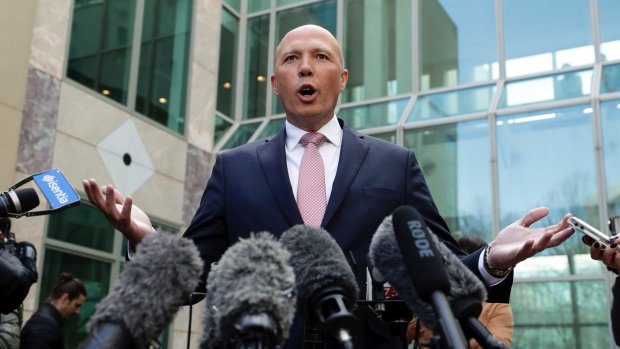 Neither does yesterday's vote settle the fundamental question the Liberal Party has been been grappling with since the
Neither does yesterday's vote settle the fundamental question the Liberal Party has been been grappling with since the 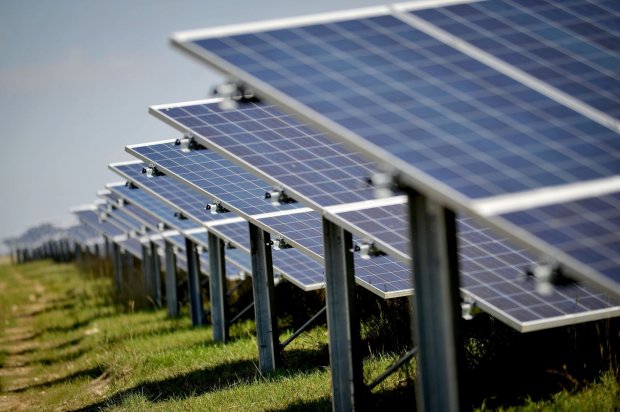 The so-called "Praetorian Guard" of the "right" in the federal Liberal Party, Peter Dutton and Mathias Cormann, have aided and abetted the Liberals' embrace of higher taxes and higher government spending. And on issues that are supposedly important to "conservatives" like freedom of speech, Dutton or Cormann have said nothing.
The so-called "Praetorian Guard" of the "right" in the federal Liberal Party, Peter Dutton and Mathias Cormann, have aided and abetted the Liberals' embrace of higher taxes and higher government spending. And on issues that are supposedly important to "conservatives" like freedom of speech, Dutton or Cormann have said nothing.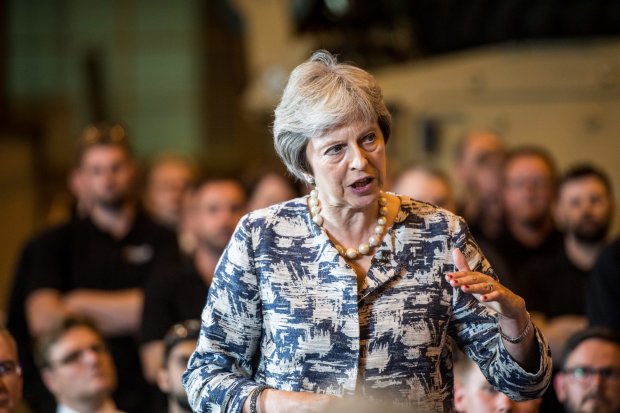 Peter Dutton might win more votes for the Coalition in Queensland than Malcolm Turnbull, and that's certainly a good enough reason for 35 Liberal MPs to vote for him, but as yet it is unclear what government policies would change if Dutton instead of Turnbull were prime minister.
Peter Dutton might win more votes for the Coalition in Queensland than Malcolm Turnbull, and that's certainly a good enough reason for 35 Liberal MPs to vote for him, but as yet it is unclear what government policies would change if Dutton instead of Turnbull were prime minister.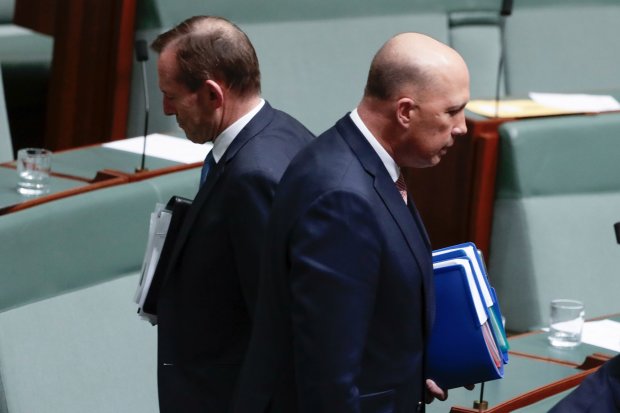 In years to come political historians in this country will ponder how it could be that a prime minister could nearly lose their job over the question of whether a government-mandated reductions in carbon dioxide emissions should be enforced through legislation or regulation.
In years to come political historians in this country will ponder how it could be that a prime minister could nearly lose their job over the question of whether a government-mandated reductions in carbon dioxide emissions should be enforced through legislation or regulation. But I would argue that Soutphommasane has overlooked his own contribution to racial discord. The political left's obsession with identity politics undermines the critical social norm of treating people as individuals, triggers an angry reaction which feeds white identity politics and increases divisions in our society.
But I would argue that Soutphommasane has overlooked his own contribution to racial discord. The political left's obsession with identity politics undermines the critical social norm of treating people as individuals, triggers an angry reaction which feeds white identity politics and increases divisions in our society. Taxpayer Compliance Officers would sit in on cabinet meetings, pop in to the Prime Minister's office to ask question the PM and the PM's staff, and would read and vet all cabinet submissions. Officers would be embedded for up to three months at a time and would be regularly rotated to avoid them getting too close to ministers and public servants. Once a year, Taxpayer Compliance Officers would issue a public report detailing how the government was complying with its responsibilities to taxpayers.
Taxpayer Compliance Officers would sit in on cabinet meetings, pop in to the Prime Minister's office to ask question the PM and the PM's staff, and would read and vet all cabinet submissions. Officers would be embedded for up to three months at a time and would be regularly rotated to avoid them getting too close to ministers and public servants. Once a year, Taxpayer Compliance Officers would issue a public report detailing how the government was complying with its responsibilities to taxpayers.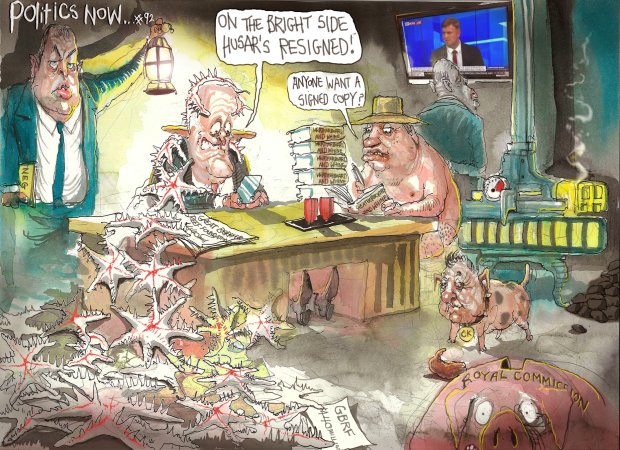
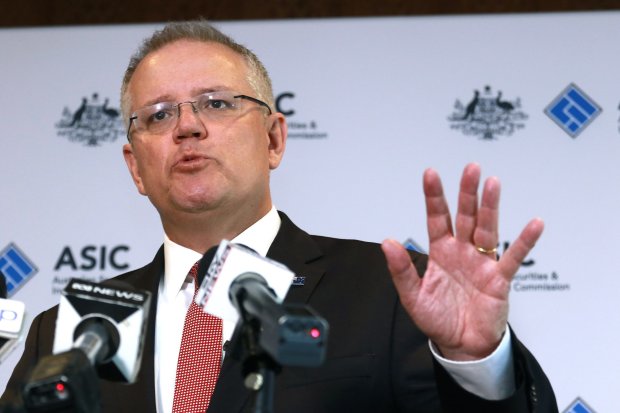 The Banking Executive Accountability Regime gives the government the power to decide who financial institutions can employ in executive positions and how much those executives can be paid.
The Banking Executive Accountability Regime gives the government the power to decide who financial institutions can employ in executive positions and how much those executives can be paid.